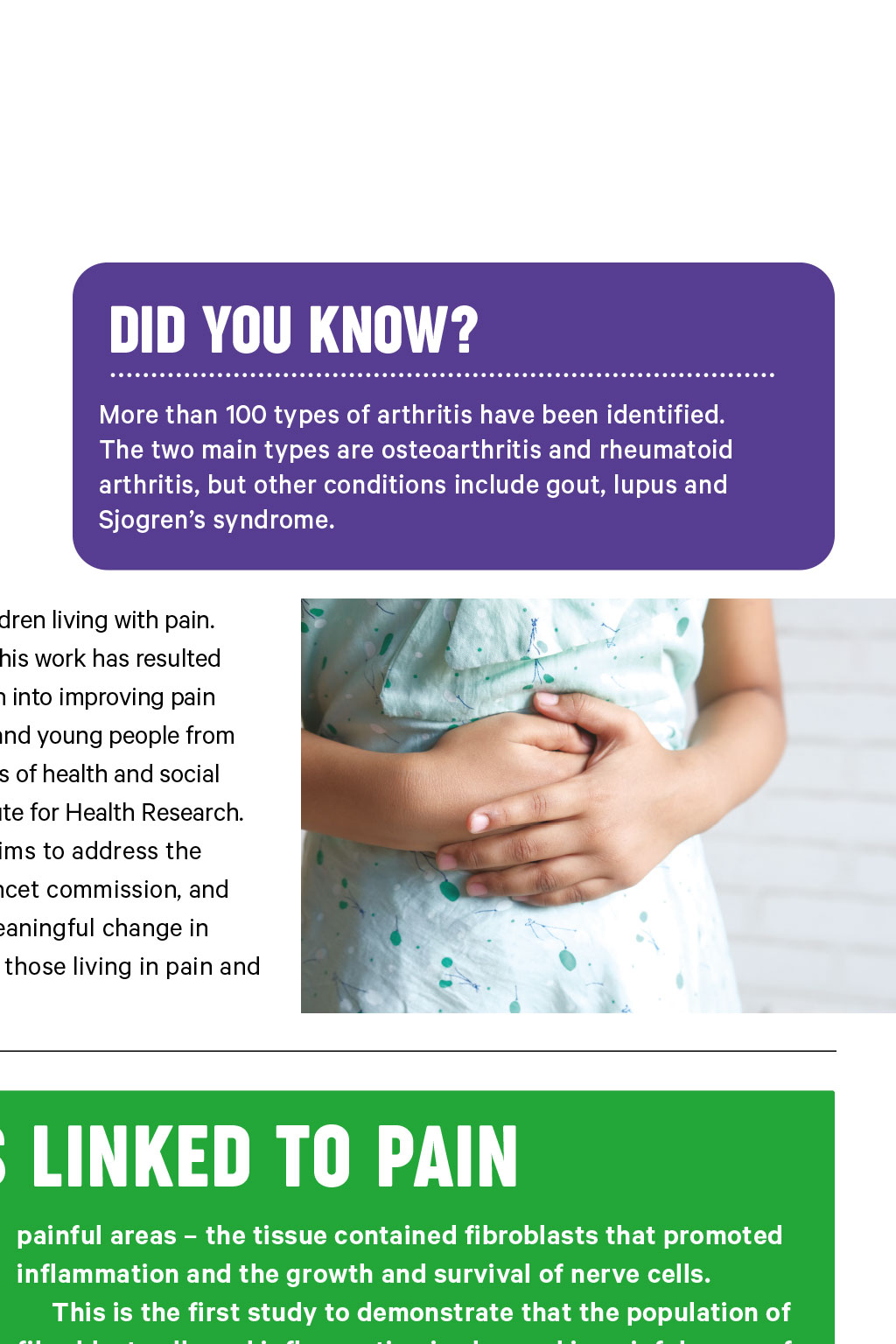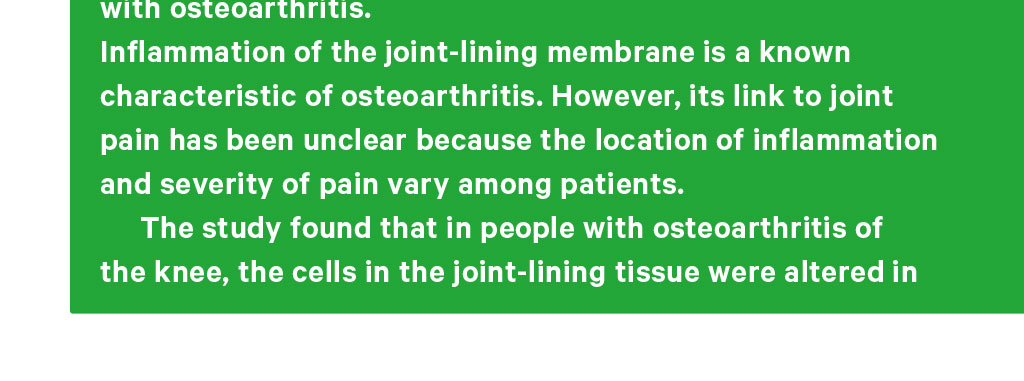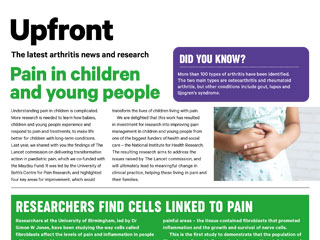












Upfront The latest arthritis news and research Pain in children and young people Understanding pain in children is complicated. More research is needed to learn how babies, children and young people experience and respond to pain and treatments, to make life better for children with long-term conditions. Last year, we shared with you the findings of The Lancet commission on delivering transformative action in paediatric pain, which we co-funded with the Mayday Fund. It was led by the University of Baths Centre for Pain Research, and highlighted four key areas for improvement, which would DID YOU KNOW? More than 100 types of arthritis have been identified. The two main types are osteoarthritis and rheumatoid arthritis, but other conditions include gout, lupus and Sjogrens syndrome. transform the lives of children living with pain. We are delighted that this work has resulted in investment for research into improving pain management in children and young people from one of the biggest funders of health and social care the National Institute for Health Research. The resulting research aims to address the issues raised by The Lancet commission, and will ultimately lead to meaningful change in clinical practice, helping those living in pain and their families. Researchers find cells linked to pain Researchers at the University of Birmingham, led by Dr Simon W Jones, have been studying the way cells called fibroblasts affect the levels of pain and inflammation in people with osteoarthritis. Inflammation of the joint-lining membrane is a known characteristic of osteoarthritis. However, its link to joint pain has been unclear because the location of inflammation and severity of pain vary among patients. The study found that in people with osteoarthritis of the knee, the cells in the joint-lining tissue were altered in painful areas the tissue contained fibroblasts that promoted inflammation and the growth and survival of nerve cells. This is the first study to demonstrate that the population of fibroblast cells and inflammation is changed in painful areas of the joint. Current pain-relief medication has limited success and can have side effects. Researchers will continue to explore exactly how the joint-lining cells can be targeted to regulate pain to support the development of new drugs for people living with knee osteoarthritis.